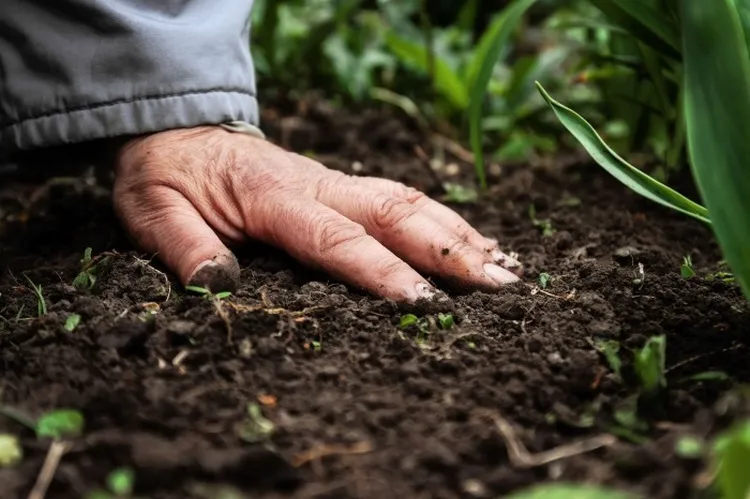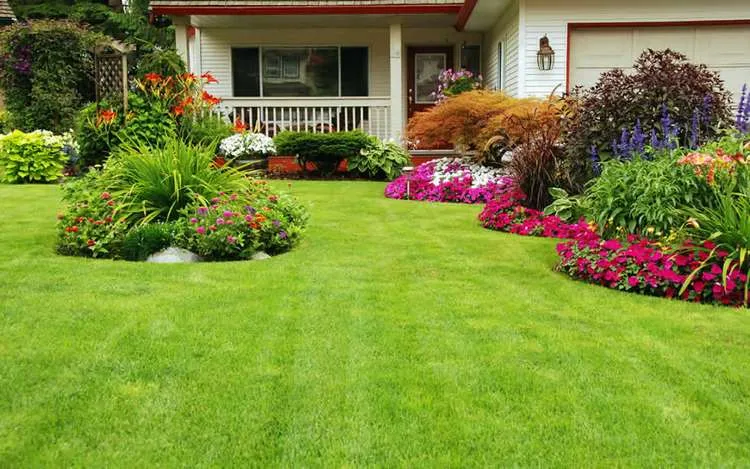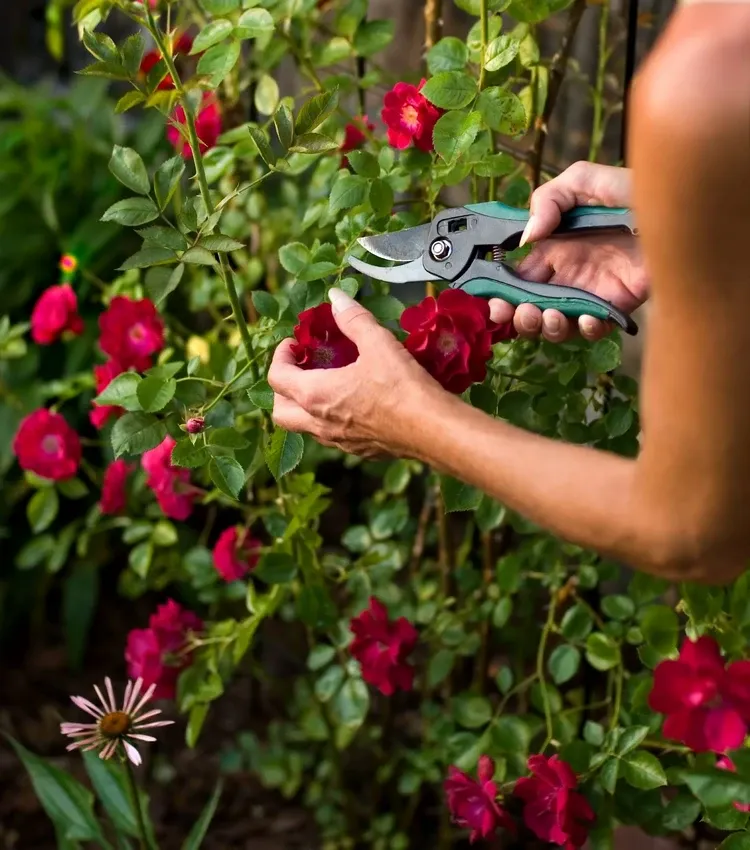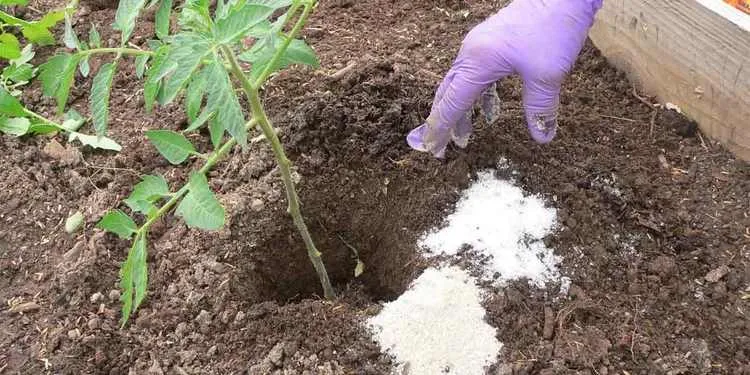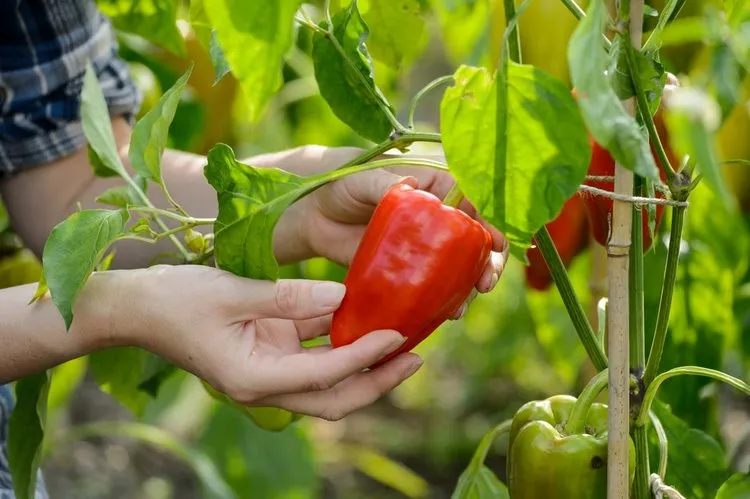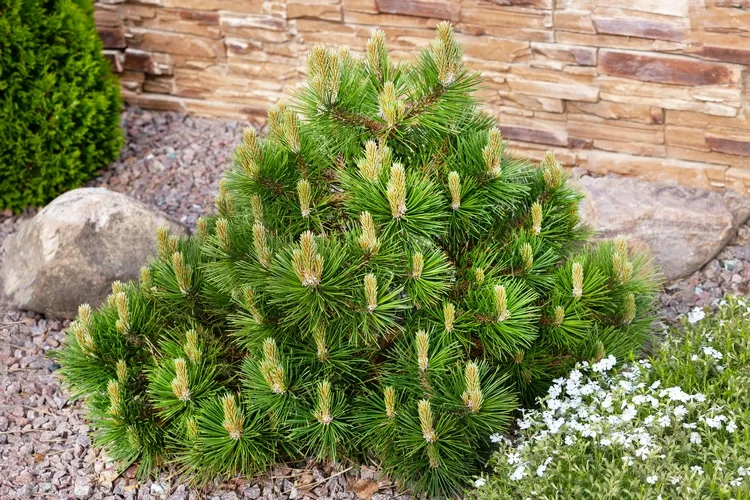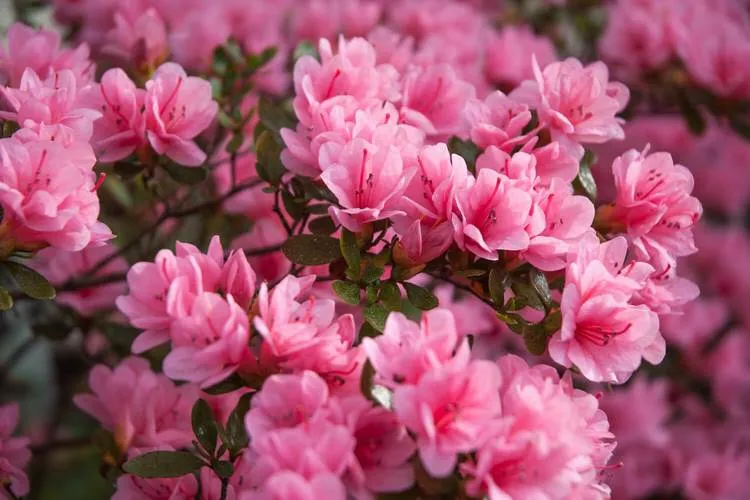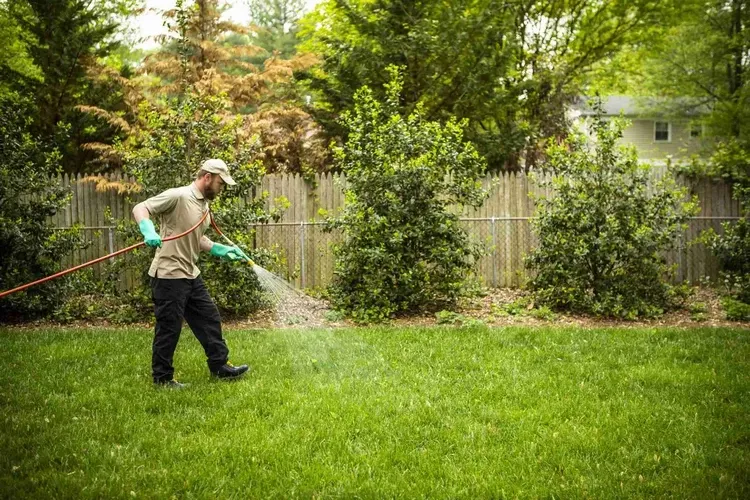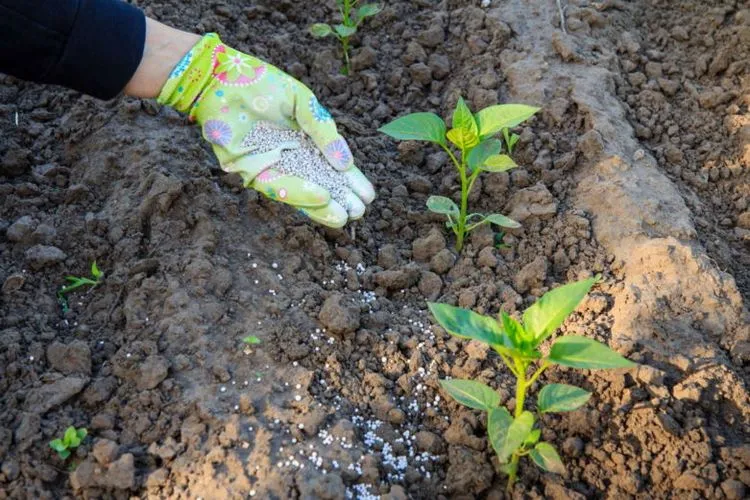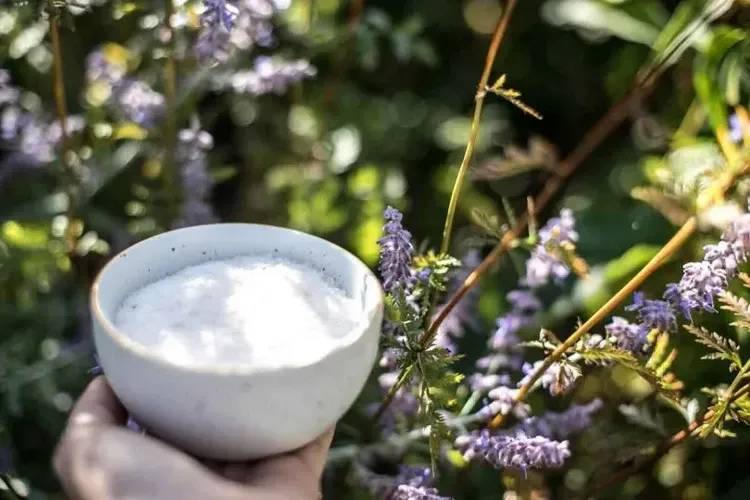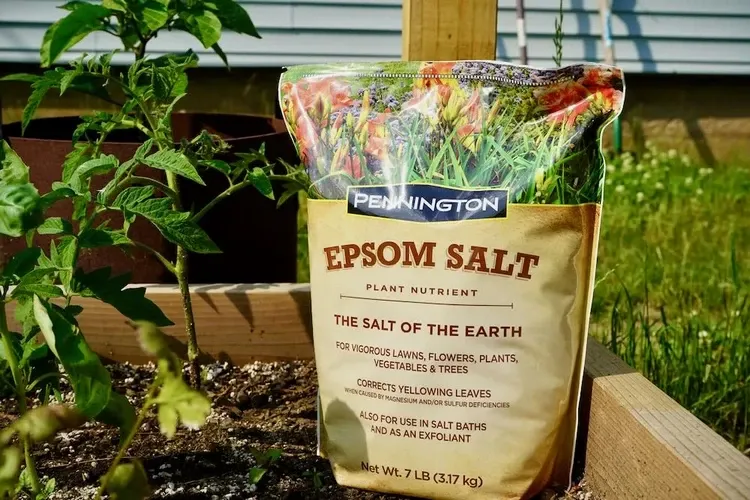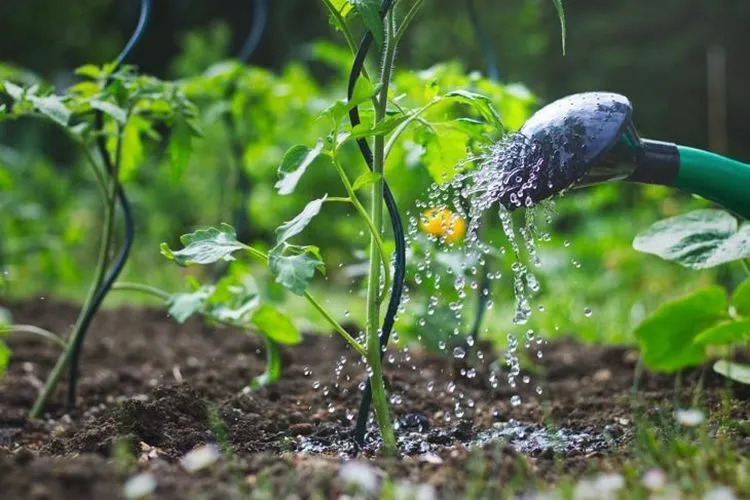It is difficult to imagine that one and the same remedy helps to lose weight, strengthen the immune system, relieve stress, improve the condition of the skin, hair and nails and help the plants it in your garden. What is this miracle ingredient? Well, you may be surprised, but we are talking about Epsom salt! People use Epsom salt in the bath to relieve muscle pain, but it’s also a great gardening supplement used by experienced gardeners. Using Epsom salt in gardening is not a new idea. This “best kept secret” has been known for generations, but does it really work, and if so, how? Let‘s look at the benefits of Epsom salt for plants and see why, how and when to use it in your garden!
What Is Epsom Salt and How Does It Benefit Plants?
Epsom salt is a mineral chemical compound. Why is it called Epsom salt? Because it is named after the town of Epsom (Surrey, England), where it was first discovered. Commonly known as magnesium sulfate, it has many advantages, especially in horticulture. Indeed, this substance allows, among other things, to repel slugs. This is done by sprinkling a small amount of Epsom salt on the path taken by these pests. Since they cannot tolerate this substance, they will be eliminated. Keep reading to discover the other benefits of Epsom salt for plants!
What Are the Scientific Principles Behind the Use of Epsom Salt for Plants?
When placed in water, magnesium sulfate breaks down into magnesium and sulfate.
Magnesium is good for plants from a very early age, when the seed is just beginning to develop. It helps in the seed germination process by strengthening the cell walls of plants so they can receive necessary nutrients. Magnesium also plays an important role in photosynthesis, helping to form chlorophyll. Chlorophyll is hugely important as it is used by plants to convert sunlight into food.
Sulfate is naturally found in nature as it is the mineral form of sulfur, is just as important for plants. Like magnesium, it helps the production of chlorophyll. When combined with magnesium, it results in beneficial nutrients and minerals for the plants in your garden and aids their health and longevity.
Also read: What Fertilizer for Rose Bushes in Fall Should You Use?
What Types of Plants Can Benefit from Epsom Salt?
The benefits of Epsom salt for plants are well known to gardeners. Let’s see which plants benefit the most from Epsom salt!
Benefits of Epsom Salt for Roses
Roses usually suffer from magnesium deficiency. As we explained above, one of the main elements of Epsom salt is magnesium. Adding it to the plants will make the foliage greener, healthier and result in a prolific bloom. Magnesium strengthens cells, and sulfate helps flowers absorb nutrients from the soil. The organic substances it contains contribute to their aesthetic appearance. Thus, Epsom salt allows you to have beautiful roses with abundant blooms.
- Before planting a new bush soak it in half a cup of Epsom salt per 1 gallon/4.5 liters of water to strengthen the roots.
- When planting new bushes, spread one tablespoon of Epsom salt at the bottom of the hole and water thoroughly.
- Once early in the season, it is also recommended to apply half a cup of Epsom salt to the base of the plant to encourage flowering and healthy development.
Benefits of Epsom Salt for Tomatoes
At the end of the growing season the reduced yields and the yellowing leaves are a sign that tomatoes are suffering a magnesium deficiency. To avoid that, treat your plants with Epsom salt throughout the season. It is recommended to add 1-2 tablespoons of Epsom salt to the area where you will plant your tomatoes. During the season, spread a tablespoon of magnesium sulfate around each bush every 14 days.
Benefits of Epsom Salt for Peppers
Peppers, just like tomatoes, may suffer magnesium deficiency and Epsom salt will solve the problem successfully. Use the same method – add 1-2 tablespoons of Epsom salt to the area where you will plant your peppers and then add 1 tbsp to the roots of each plant every two weeks.
Fertilize Evergreen Trees with Epsom Salt
Evergreens need large amounts of nutrients to grow and magnesium sulfate promotes their growth. The benefits of Epsom salt for plants such as azaleas or rhododendrons are huge. The leaves of the trees are brighter and their roots are stronger. Dilute a tablespoon of Epsom salt in 4 cups of water. Water the trees from the roots. Repeat every two or four weeks.
What Are The Benefits of Epsom Salt for Flowers, Ornamental Shrubs and Fruit Trees?
Epsom salt is beneficial to fruit trees, evergreen shrubs and flowers, especially, azaleas and rhododendrons. When you add it to the soil, it helps the trees and shrubs absorb more minerals which makes your plants stronger and healthier and this means that you’ll enjoy them for years to come. In addition, magnesium sulfate can increase both flower and fruit production. At the beginning of each season, apply 1 tablespoon of Epsom salt to the root area of the trees and shrubs. In this way you will prepare the plants and make them more resistant to weather changes. You can repeat fertilizing with Epsom salt one a month for optimal results.
Benefits of Epsom Salt for Plants – Beautify Your Lawn
It’s so nice to look at lush green lawns. Believe it or not, but Epsom salt it is incredibly beneficial for your lawn! Like all plants, lawns need nutrients to optimize their growth. Do you remember that magnesium helps the formation of chlorophyll? Yes, magnesium sulfate will make your lawn lusher, softer and greener! How to apply it? You can use a tank sprayer or a garden hose with a spray attachment. Dissolve 3 lb/1.5 kg of salt in plenty of water. This amount is for 1250 square feet/115 square meters.
When and How Should Epsom Salt Be Applied to Plants?
The need of magnesium and sulfur vary greatly from crop to crop during the growing season and from soil type to soil type. For example, for cabbage, legumes and cereals need more sulfur while potatoes, tomatoes, cucumbers and root vegetables require magnesium. Among all flowers, roses are the most susceptible to magnesium and sulfur deficiencies. Generally, plants need magnesium during growth and dry periods, and during spring and late fall.
When to fertilize your garden plants with Epsom salt? In early spring when preparing the soil for sowing/planting or in late summer/ early fall if you notice that your plants have symptoms of magnesium and sulfur deficiency.
How to apply Epsom salt as fertilizer? Dissolve magnesium sulfate granules in water at room temperature. Use the solution immediately after preparation. If you use dry fertilizer, it should be embedded shallowly into the soil and then you must water the plants.
Can Epsom Salt Remedy Specific Plant Deficiencies or Diseases?
Now you know that Epsom salt is a great remedy for sulfur and magnesium deficiencies. However, this is not the only benefit for plants. Magnesium sulfate prevents blossom rot which is essential for tomatoes, for example.
You can use Epsom salt as a fungicide as well because it is natural and non toxic to plants. One of the its major advantages is that it is affordable and you do not need any special equipment to use it as a fertilizer or fungicide. Last but not least, it can be bought from almost every garden center or nursery.
What diseases can you treat with magnesium sulfate? You can spray with Epsom salt solution for powdery mildew which affects plants like roses, zucchini, tomatoes, etc. and appears as white coating on the leaves and stems. Black spots is another fungal disease that often affects roses and other plants. Magnesium sulfate is also great for preventing and treating leaf spots and rust that appear on plant leaves.
Here is an Epsom Salt Fungicide Recipe
Mix 1 tablespoon of Epsom salt with 1 gallon/4,5 l of water. Stir until the salt is completely dissolved. Transfer the solution to a spray bottle. Spray both sides of the leaves of the affected plants. You can also apply it directly to the soil around the plants.
Are There Any Potential Risks or Side Effects of Using Epsom Salt for Plants?
Unlike conventional fertilizers, Epsom salt does not accumulate in the soil over time, making it safer than using chemical soil additives. However, you need to keep in mind some precautions.
- Before spraying your plants, it is recommended to test the Epsom salt spray on a small area of the plant to make sure it will not damage it.
- Spraying with Epsom salt may result in leaf scorching if you do it on hot and sunny days. Make sure to apply it to plants early in the morning or late in the afternoon to avoid such negative side effects.
- Experts do not recommend spraying Epsom salt on stressed or damaged plants because this may make them even weaker.
- Make sure to test your soil before fertilizing with Epsom salt. Some plants suffer from magnesium deficiency because there is too much phosphorus in the soil, which prevents the plant to adequately absorb the magnesium in soil. In such cases Epsom salt will not be beneficial to your plants. What you need to do is reduce the phosphorus levels so that your plants are thriving.
- Do not use Epsom salt on acidic soil. While it can neutralize alkaline soil, you should refrain from using it in the garden, as it can exacerbate the problem when the soil is acidic.
Where Can I Buy Epsom Salt Suitable for Plant Use and How Should It Be Stored?
Epsom salt can be found online or at garden centers. Store it in a tightly closed container in a dark dry place. Avoid contact with moisture.
Epsom Salt Fertilizer Recipe
Epsom salt can be used for both root and foliar feeding of plants during the growing season – in spring together with nitrogen and phosphate fertilizers, the rest of the time on its own.
- You can apply Epsom salt as a fertilizer directly into your plant’s soil. The recommended amount is 1 teaspoon per foot every 4 weeks.
- Optionally, you can mix 1 teaspoon of Epsom salt in 1 cup of water and use it as a spray.


